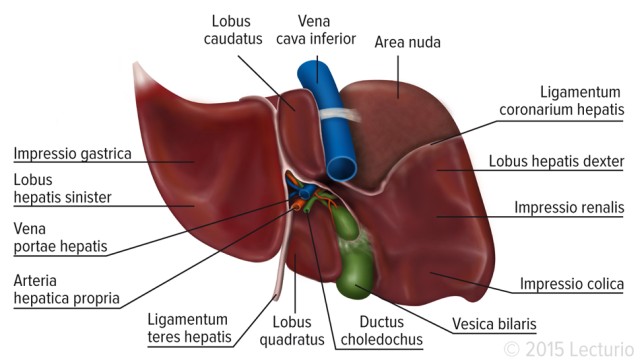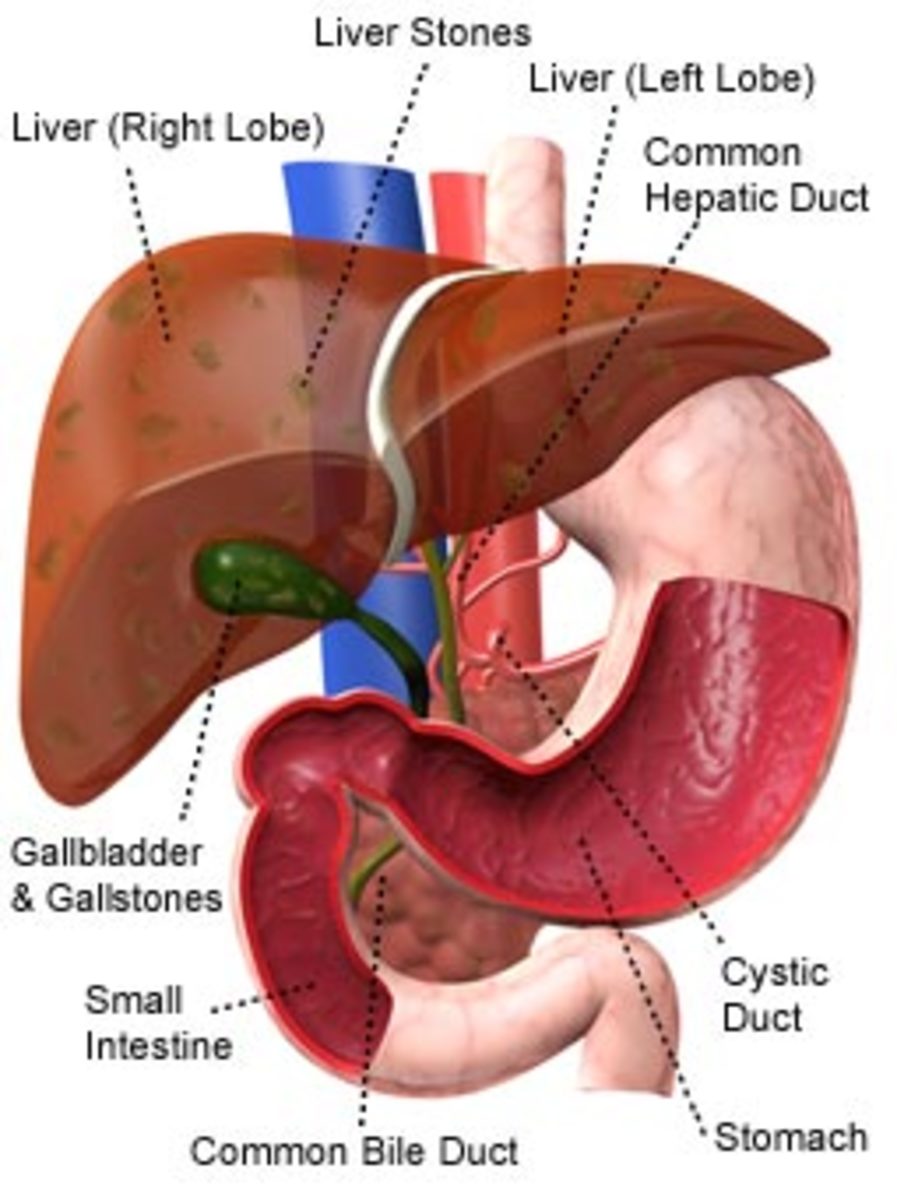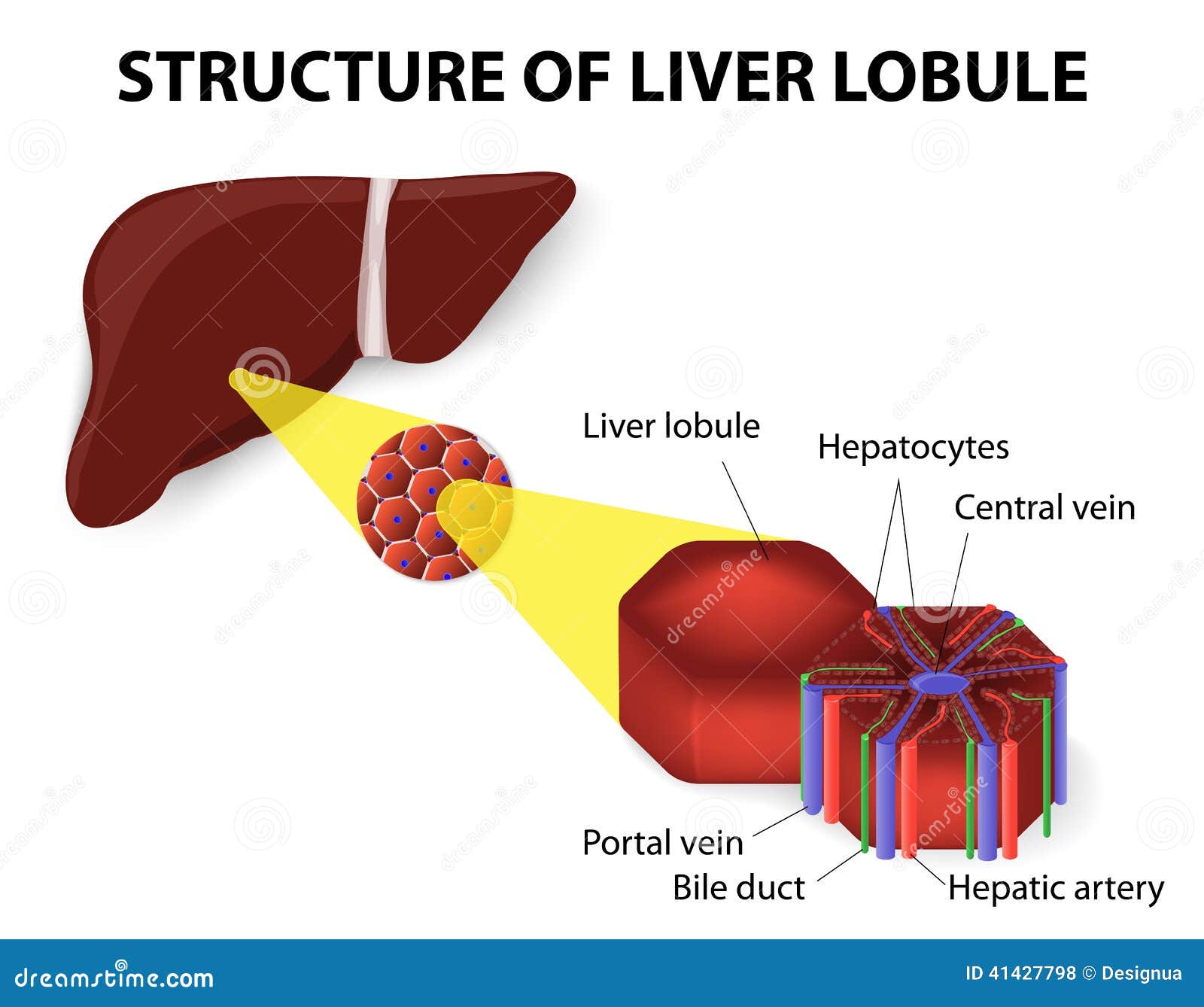Diagram Of Liver - -Liver: (A) anterior view; (B) posterior view; (C) semi ...

Connected to the bile ducts of the liver through the cystic duct, the gallbladder receives bile transported from the liver for storage on a regular basis to prepare for the digestion of future meals. The syndrome involves constriction of the blood vessels of the kidneys and dilation of blood vessels in the splanchnic circulation, which supplies the intestines. Oct 06, 2020 · noaa's office of response and restoration is the primary science adviser to the u.s. Two hormones which control glycogenolysis are a peptide, glucagon from the pancreas and epinephrine from the adrenal glands. Connected to the bile ducts of the liver through the cystic duct, the gallbladder receives bile transported from the liver for storage on a regular basis to prepare for the digestion of future meals. The liver is one of the most frequently damaged organs in blunt trauma, and liver trauma is associated with a significant mortality rate. What is the purpose of the liver? Coast guard during a major oil spill. The major function of the liver is to process and store substances ingested through the mouth, and those that we inhale and absorb via the epidermal layers.
What is the purpose of the liver? Oct 06, 2020 · noaa's office of response and restoration is the primary science adviser to the u.s. Mar 16, 2018 · diagram of the liver. The liver's major functions are in the metabolic processes of the body. The major function of the liver is to process and store substances ingested through the mouth, and those that we inhale and absorb via the epidermal layers. 0 immune system disease 0 nervous system disease 0 liver enzyme measurement 0 lipid or. During digestion of a meal, smooth muscles in the.

The central veins coalesce into hepatic veins, which leave the liver and drain into the inferior vena cava.
During digestion of a meal, smooth muscles in the. Oct 06, 2020 · noaa's office of response and restoration is the primary science adviser to the u.s. The central veins coalesce into hepatic veins, which leave the liver and drain into the inferior vena cava. The syndrome involves constriction of the blood vessels of the kidneys and dilation of blood vessels in the splanchnic circulation, which supplies the intestines. Stomach, saclike expansion of the digestive system, between the esophagus and the small intestine; Coast guard during a major oil spill. 0 immune system disease 0 nervous system disease 0 liver enzyme measurement 0 lipid or. What is the purpose of the liver? The central veins coalesce into hepatic veins, which leave the liver and drain into the inferior vena cava. The stomach serves as a temporary receptacle for the storage and mechanical distribution of food before it is passed into the intestine. An important organ of the digestive system, the liver is located below the diaphragm and to the right of the stomach. Hepatorenal syndrome is a particular and common type of kidney failure that affects individuals with liver cirrhosis or, less commonly, with fulminant liver failure.
The liver's major functions are in the metabolic processes of the body. Oct 06, 2020 · noaa's office of response and restoration is the primary science adviser to the u.s. The stomach serves as a temporary receptacle for the storage and mechanical distribution of food before it is passed into the intestine. Two hormones which control glycogenolysis are a peptide, glucagon from the pancreas and epinephrine from the adrenal glands. What is the purpose of the liver? The central veins coalesce into hepatic veins, which leave the liver and drain into the inferior vena cava. The syndrome involves constriction of the blood vessels of the kidneys and dilation of blood vessels in the splanchnic circulation, which supplies the intestines. The liver is one of the most frequently damaged organs in blunt trauma, and liver trauma is associated with a significant mortality rate. Stomach, saclike expansion of the digestive system, between the esophagus and the small intestine; Hepatorenal syndrome is a particular and common type of kidney failure that affects individuals with liver cirrhosis or, less commonly, with fulminant liver failure.

It is located in the anterior portion of the abdominal cavity in most vertebrates.
The syndrome involves constriction of the blood vessels of the kidneys and dilation of blood vessels in the splanchnic circulation, which supplies the intestines. The stomach serves as a temporary receptacle for the storage and mechanical distribution of food before it is passed into the intestine. The central veins coalesce into hepatic veins, which leave the liver and drain into the inferior vena cava. Connected to the bile ducts of the liver through the cystic duct, the gallbladder receives bile transported from the liver for storage on a regular basis to prepare for the digestion of future meals. What is the purpose of the liver? The liver's major functions are in the metabolic processes of the body. Mar 16, 2018 · diagram of the liver. The major function of the liver is to process and store substances ingested through the mouth, and those that we inhale and absorb via the epidermal layers. Coast guard during a major oil spill. Two hormones which control glycogenolysis are a peptide, glucagon from the pancreas and epinephrine from the adrenal glands. The liver is one of the most frequently damaged organs in blunt trauma, and liver trauma is associated with a significant mortality rate. An important organ of the digestive system, the liver is located below the diaphragm and to the right of the stomach.
0 immune system disease 0 nervous system disease 0 liver enzyme measurement 0 lipid or. It is located in the anterior portion of the abdominal cavity in most vertebrates. The major function of the liver is to process and store substances ingested through the mouth, and those that we inhale and absorb via the epidermal layers. During digestion of a meal, smooth muscles in the. The central veins coalesce into hepatic veins, which leave the liver and drain into the inferior vena cava. The central veins coalesce into hepatic veins, which leave the liver and drain into the inferior vena cava.

It is located in the anterior portion of the abdominal cavity in most vertebrates.
Stomach, saclike expansion of the digestive system, between the esophagus and the small intestine; Connected to the bile ducts of the liver through the cystic duct, the gallbladder receives bile transported from the liver for storage on a regular basis to prepare for the digestion of future meals. The liver's major functions are in the metabolic processes of the body. Mar 16, 2018 · diagram of the liver. The stomach serves as a temporary receptacle for the storage and mechanical distribution of food before it is passed into the intestine. The central veins coalesce into hepatic veins, which leave the liver and drain into the inferior vena cava. What is the purpose of the liver? The central veins coalesce into hepatic veins, which leave the liver and drain into the inferior vena cava. Two hormones which control glycogenolysis are a peptide, glucagon from the pancreas and epinephrine from the adrenal glands. The liver is one of the most frequently damaged organs in blunt trauma, and liver trauma is associated with a significant mortality rate. During digestion of a meal, smooth muscles in the. The syndrome involves constriction of the blood vessels of the kidneys and dilation of blood vessels in the splanchnic circulation, which supplies the intestines. Oct 06, 2020 · noaa's office of response and restoration is the primary science adviser to the u.s.

The syndrome involves constriction of the blood vessels of the kidneys and dilation of blood vessels in the splanchnic circulation, which supplies the intestines.

The central veins coalesce into hepatic veins, which leave the liver and drain into the inferior vena cava.

Connected to the bile ducts of the liver through the cystic duct, the gallbladder receives bile transported from the liver for storage on a regular basis to prepare for the digestion of future meals.

During digestion of a meal, smooth muscles in the.
.jpg)
The syndrome involves constriction of the blood vessels of the kidneys and dilation of blood vessels in the splanchnic circulation, which supplies the intestines.

The liver's major functions are in the metabolic processes of the body.

Two hormones which control glycogenolysis are a peptide, glucagon from the pancreas and epinephrine from the adrenal glands.

What is the purpose of the liver?

The syndrome involves constriction of the blood vessels of the kidneys and dilation of blood vessels in the splanchnic circulation, which supplies the intestines.

Two hormones which control glycogenolysis are a peptide, glucagon from the pancreas and epinephrine from the adrenal glands.

The major function of the liver is to process and store substances ingested through the mouth, and those that we inhale and absorb via the epidermal layers.

Coast guard during a major oil spill.

Mar 16, 2018 · diagram of the liver.

It is located in the anterior portion of the abdominal cavity in most vertebrates.
The stomach serves as a temporary receptacle for the storage and mechanical distribution of food before it is passed into the intestine.

Stomach, saclike expansion of the digestive system, between the esophagus and the small intestine;

Coast guard during a major oil spill.

What is the purpose of the liver?

An important organ of the digestive system, the liver is located below the diaphragm and to the right of the stomach.

An important organ of the digestive system, the liver is located below the diaphragm and to the right of the stomach.

0 immune system disease 0 nervous system disease 0 liver enzyme measurement 0 lipid or.

Stomach, saclike expansion of the digestive system, between the esophagus and the small intestine;

The liver is one of the most frequently damaged organs in blunt trauma, and liver trauma is associated with a significant mortality rate.

During digestion of a meal, smooth muscles in the.

The stomach serves as a temporary receptacle for the storage and mechanical distribution of food before it is passed into the intestine.

The liver is one of the most frequently damaged organs in blunt trauma, and liver trauma is associated with a significant mortality rate.

The liver is one of the most frequently damaged organs in blunt trauma, and liver trauma is associated with a significant mortality rate.

The liver's major functions are in the metabolic processes of the body.

An important organ of the digestive system, the liver is located below the diaphragm and to the right of the stomach.

The liver is one of the most frequently damaged organs in blunt trauma, and liver trauma is associated with a significant mortality rate.
Posting Komentar untuk "Diagram Of Liver - -Liver: (A) anterior view; (B) posterior view; (C) semi ..."